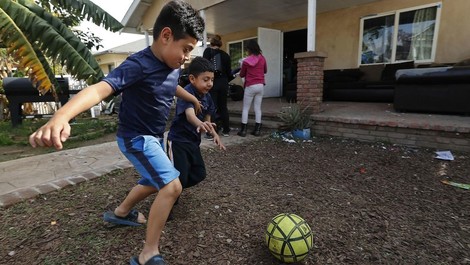Your podcast discovery platform
Curious minds select the most fascinating podcasts from around the world. Discover hand-piqd audio recommendations on your favorite topics.

piqer for: Climate and Environment Global finds
Andrea is a writer and researcher based out of Chicago. Andrea has a Bachelor's degree in environmental science from The Ohio State University and a Master's in Environmental Planning and Management at National Taiwan University, where she specialized in climate adaptation and urbanization. She writes for TaiwaneseAmerican.org, and sends out a biweekly newsletter which includes articles on politics, environment, identity, and intersections of race, class, and gender (http://eepurl.com/bPv-F5).
The Exide Plant closed 3 years ago. The Majority of Lead-Contaminated Properties Remain Uncleaned
There's a neighborhood in southeast L.A. where the housing lots are full of lead. It's been there for a while now, but the residents have been waiting a long time for remediation.
As part of a soil cleanup planned for thousands of properties surrounding the closed Exide Technologies battery recycling plant in Vernon, state regulators detected lead outside Perez's home at hazardous levels — above 1,000 parts per million. Nearly two years later, it hasn't been cleaned.
Some of the lots in the area are contaminated with lead over the state standard for residences, but below the threshold for which the state will provide cleanup, leaving behind "a checkerboard-like pattern of safe and contaminated properties stretching more than 1.7 miles from the shuttered plant." Lead may be lurking in over 10,000 properties in the area. Of the 7,500 properties that exceed the state standard, only 2,500 are going to be cleaned. So far, only 270 have been touched. Exide maintains that the lead is not from their plant, and denies any responsibility. The residents are mostly working class Latinx families, and they have suspicions as to why the cleanup is taking as long as it is. Lead is toxic for all, but devastating for young children, and time is ticking.
Community groups and county health officials critical of the plan want authorities to select entire blocks for cleanup rather than proceeding parcel-by-parcel, an approach they deem piecemeal and insufficient to protect residents.
But contracts with cleanup firms have fallen through, data on the most contaminated sites have been hidden from the public, and some residents are still unaware of the lead. Unfortunately, this is not an uncommon situation highlighting the difficulty in pollution remediation. May we think deeply about how our systems leave our communities, and particularly, our children.
